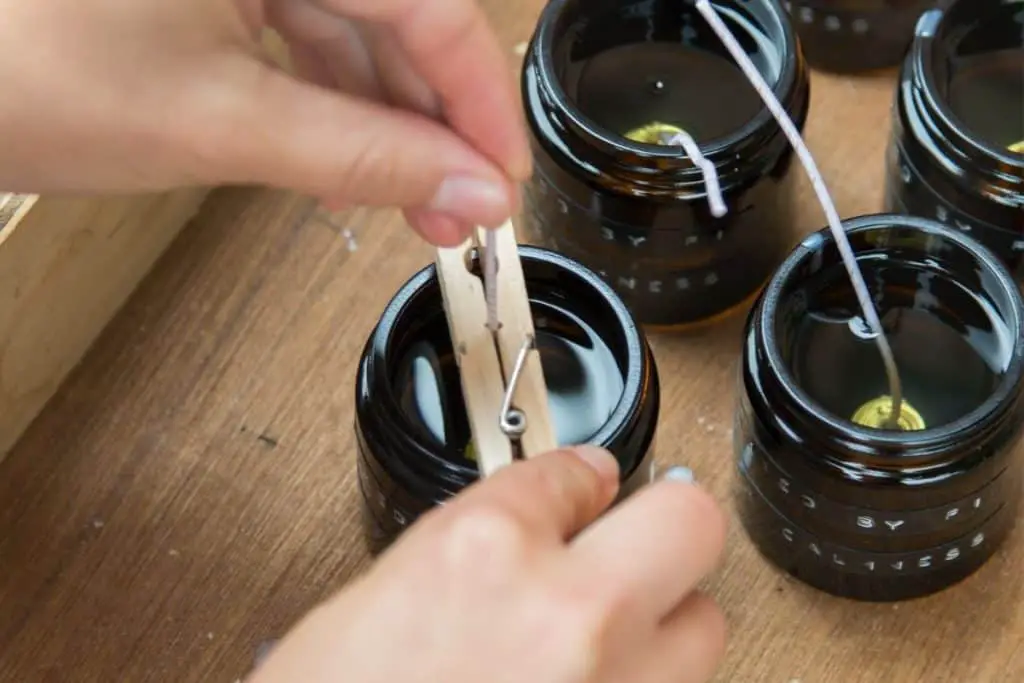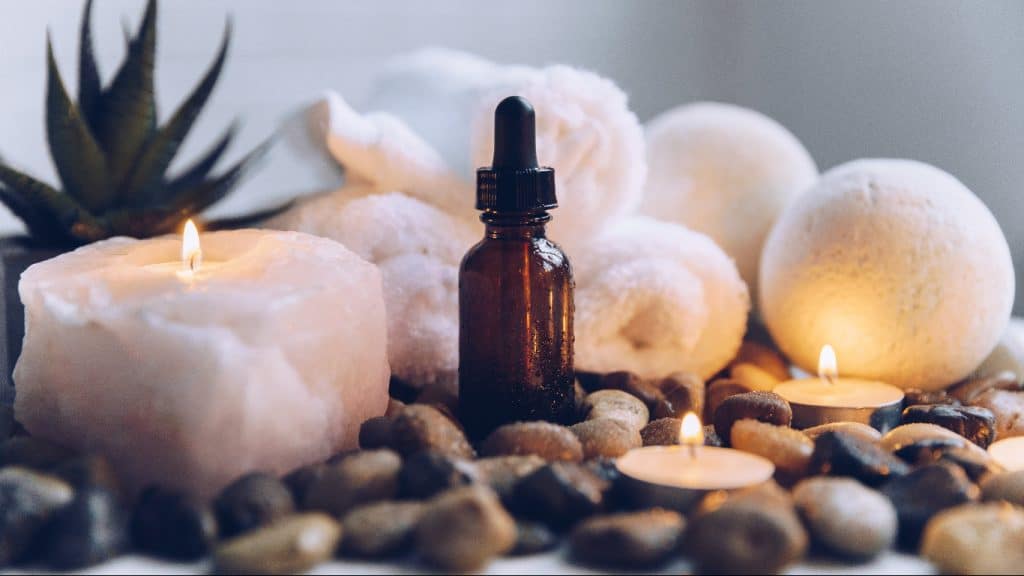If you have just started making candles, you have probably heard about flashpoint at least once or twice and most likely did not know what flashpoint means and how important it is in candle making. Its importance is not something to be ignored, and here is why.
Flashpoint in candle making signifies the temperature where the oil is easily combustible when it touches a spark or an open flame. Some fragrance oils have lower flashpoints and are safe to use, but this is as long as they don’t come in contact with an open flame or spark.
Do you dream of creating your own beautifully scented candles that put store-bought ones to shame? Are you tired of feeling envious of those who effortlessly craft stunning candles for their homes or businesses? If so, we have the perfect solution for you! Candle Making 4 You™ is a comprehensive step-by-step guide that will turn you into a master candle maker – whether you’re a complete beginner or an experienced hobbyist. This system will teach you everything you need to know to create candles that look professional and smell amazing.
I know this all sounds a little dramatic, but it’s not. It doesn’t mean that your candle will start to combust all of a sudden, but the chances are (even though they are low) that it might happen.
But other than that, the flashpoint of fragrance oils is nothing to worry about. You just need to take the necessary steps and follow the guidelines. But first, let’s look at flashpoints and their meaning.
What does flashpoint mean in candle making?

Flashpoint in candle making is the temperature that causes fragrance oil to combust if exposed to a spark or an open flame. So this means the lowest temperature at which the liquid gives off its vapors. These vapors are volatile as they evaporate to form a mixture in the air present around the liquid’s surface.
If this mixture comes near an ignition source, such as an open flame, it will ignite. This also means lower the flashpoint of particular fragrance oil, the easier it is to ignite. But you should not have anything to worry about at room temperature and no flame.
It is also important to note that when fragrance oil is added to the molten wax, which has a temperature above the flashpoint, it will not combust. However, it may evaporate, and the candle may not scent as desired.
This would also mean that temperature is pretty crucial when making candles, and if you have just started out, making candles without a Thermometer would not be advisable.
Why does a fragrance flashpoint matter?
Fragrance flashpoint is of significance in candle making if:
You Are Making Gel Candles
Gel wax can be safely used if the flashpoint of added fragrance is above 170 degrees. Using a fragrance oil below 170 degrees Fahrenheit may be potentially dangerous. Special gel-safe fragrance oils are also available for use in gel wax.
If you have a specific Preferred Shipping Method
Fragrance oils with low flashpoints are not allowed for shipping via USPS or UPS 2nd Day Air. If you can ship via UPS ground, you will have more flexibility regarding the fragrance oil flashpoint you are allowed to use.
Safety Concerns Of Fragrance oils flashpoints:
Even if you use the fragrance oil with lower flashpoints in your candles, they are safe for use in melted wax, given that they do not directly interact with an open flame. For example, if you are using a fragrance oil with a flashpoint below 185, it will not ignite even if you heat the wax up to 185.
Where can you find flashpoints on ingredients?
Knowing the flashpoint of fragrance oil is essential to establish proper transportation safety. The practice of classifying volatile compounds according to their flash point is ancient. Various international standard tests can be measured through instruments such as “closed cup” and “open cup.”
You can check the flashpoints for fragrance oils on their labels. You can ask for the manufacturer or distributor’s oil flash point charts if it is not there. If they cannot provide you with sufficient information, you can check the flashpoint charts available on the internet. Oh, and by the way, if you wish to put essential oils in candles, that is also fine in fact, the chart below is for most essential oils. But just in case you plan on mixing fragrance oils with essential oils, which is totally fine by me, the chart below will not be of help, I am afraid.
Each essential oil has a specific flashpoint. You can find a table below here to have an idea of some common oils flashpoint.
Check out the current prices on Amazon
| Oil Type | Smoke Point (˚F) | Flash Point (˚F) | Fire Point (˚F) |
| Canola Oil | 457 | 619 | 662 |
| Coconut Oil | 385 | 563 | 626 |
| High Oleic Canola oil | 464 | 644 | 680 |
| Palm Olein | 446 | 615 | 666 |
| Palm Oil | 489 | 615 | 666 |
| Soybean Oil | 464 | 626 | 680 |
| Cottonseed Oil | 450 | 606 | 680 |
| Peanut Oil | 446 | 633 | 680 |
| Lard | 464 | 626 | 680 |
| Rice Bran Oil | 444 | 615 | 695 |
How Does Flashpoint Affect Your Candles?

Knowing the flashpoints of fragrance oils allows you to incorporate them into the wax at their optimal temperatures to give the best results.
When you add fragrance oil to a molten wax with a temperature above its flash point, the fragrance oil is more likely to evaporate, leaving behind a less fragrant candle.
On the other hand, adding the fragrance oil in wax with a temperature below its flash point will prevent them from binding together. In this case, the fragrance oils will leak at the top or bottom of the candle.
To get perfect candles, bring your wax’s heat to the flashpoint of the fragrance oil you are using. Stir continuously while adding the fragrance oil to ensure that it binds with the wax thoroughly.
As a general rule, an amount of 0.5 ounces of fragrance can be added to one pound of wax. And if you’re making an 8 oz candle but don’t know how much oil you need, check out this article. Double scenting require double this amount, which means 1 ounce of fragrance per pound of wax. For triple scenting, use 1.5 ounces per pound of wax. But make sure what your resin is capable of holding.
But aside from the candle’s quality, the flashpoint is a parameter for classifying materials as flammable or combustible. This classification determines the labeling, storage, shipment, and disposal guidelines for various materials.
The flashpoint of fragrance oil is considered a crucial part of the candle-making process because it defines the candle’s amount and quality of scent.
Most people perceive that the candle will burst into flames if they use the oils with a low flashpoint. But the flashpoint is more related to the candle’s cold and hot scent throw.
These fragrance oils are not as dangerous as most people might think. However, care should be taken to keep the quantity of fragrance oil you add to your wax within the recommended amounts.
If you exceed the recommended amount of fragrance oil, it may separate and leave a few residual drops on top of the candle. These “dewdrops,” also known as “sweating,” may become a potential fire hazard. They also discolor the candles or give them a messy look.
Before you start making candles with fragrance oils, it is essential to check the recommended fragrance oil quantity. In this way, you will not exceed the safety limits.
Some candle makers think that their fragrance oil may suddenly dissipate if added to hot wax. However, if you follow the guidelines, you should do just fine.
To give you an example, as a general rule, it’s not safe to leave the wax/ fragrance mixture unattended near any heat source like a stove or double boiler. This may cause the scent to throw to become weaker.
As far as the gel candles are concerned, fragrance oils with a flashpoint below 170 degrees Fahrenheit are considered unsafe, as they may catch fire instantly.
Flashpoint And Shipping, What You Need To Know.

I touched briefly on this topic earlier, but let’s look at why shipping plays a vital role in the flashpoint.
Their shipping can be challenging if you use fragrance oils with low flash points. According to FedEx, products having a 100 degrees Fahrenheit or above flashpoint are considered safe for shipment.
Here we will discuss the USPS shipping rules for hazardous substances to know how fragrance oils are shipped.
Air Shipping:
According to USPS, products with a flashpoint above 140 degrees Fahrenheit are safe for air shipping. Customers who decide to place orders with USPS should consider that the USPS website does not quote the air shipping rates if your cart includes fragrance oil with a flashpoint below their 140 degrees centigrade safety range.
For air packaging, the fragrance oil must be marked with the DOT’s square-on-point visible, including the letter Y, along with an approved DOT Class 9 risky material warning. Another label must state the identical number ID8000, along with the word “consumptive Commodity” and a declaration from the shipper as “dangerous goods.”
Ground Shipping:
USPS ground transportation shipping is allowed for fragrance oils that have a flashpoint above 100 degrees Fahrenheit and below 141 degrees Fahrenheit. In this case, they must be packaged in no more than one gallon of metallic containers.
In non-metal boxes, the oil must be packed in small bottles or containers of no more than one quart each. The container must be marked as “Surface Mail only,” “Surface Only,” or “ORM-D.”
Products with flashpoints above 200 are not considered hazardous and are allowed for international shipping. If your shipping cart includes fragrances with higher flash points than their safety range and still the company is not giving you shipping rates, call their customer service to get help.
The flashpoint of fragrance oil does not impact the candle’s scent if you have appropriately used it to mix fragrance with wax.
How To Make Sure You Do Not Reach Flashpoint.
Reaching the flashpoint is not hazardous by itself; contacting an open flame is. If the fragrance oil particles stay on the candle’s wick or upper surface, they may catch fire. So controlling the environment around it is what’s actually essential.
To know about the exact flashpoint of the fragrance oils you use in your candles, check the manufacturer’s website for product specifications.
However, most of the fragrance oil’s flashpoints fall under three categories:
· Equal to or higher than 176 Fahrenheit.
· Between 131 Fahrenheit and 176 Fahrenheit.
· Less than 131 Fahrenheit.
Conclusion:
To hobbyists and DIY candle makers, the flashpoint is a crucial part that should be considered. There is a lot of confusion, and most people think that the flashpoint of fragrance oils is a significant safety hazard.
However, they can be safely used if they are properly measured and mixed in the wax. The mixing temperature concerning the quantity of fragrance oil directly impacts the candle’s scent throw.
For candle manufacturers, shipping fragrance oils is a matter of concern. Most oils are allowed only through land service because they are volatile and pose a significant transportation hazard.
